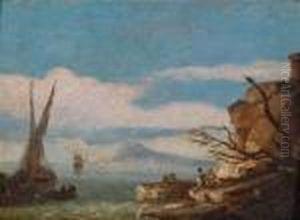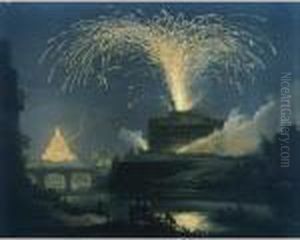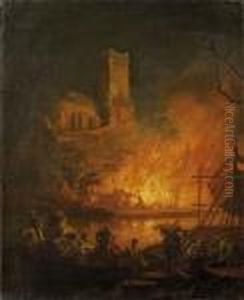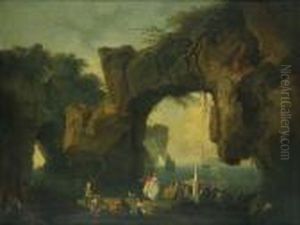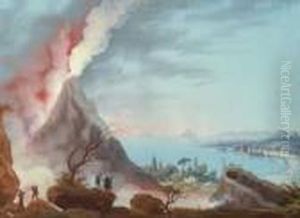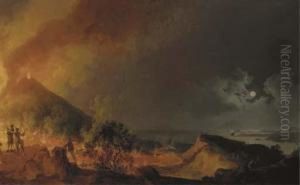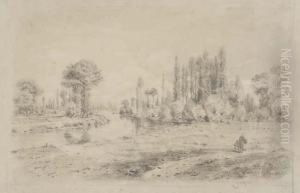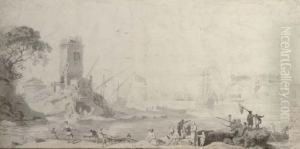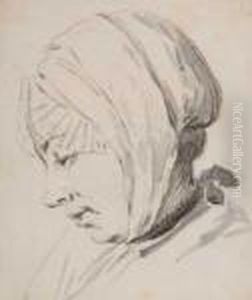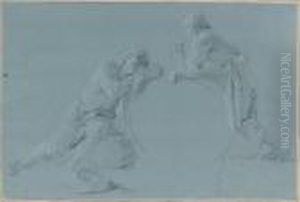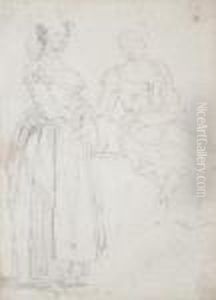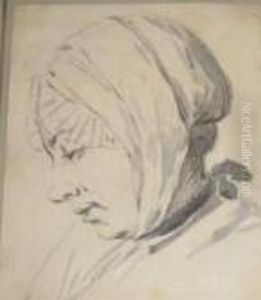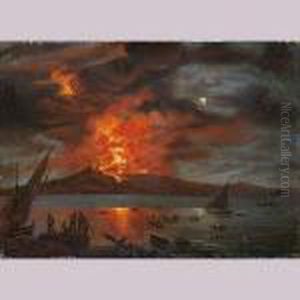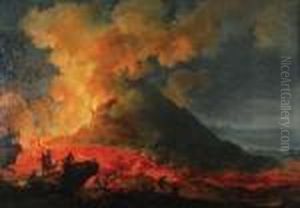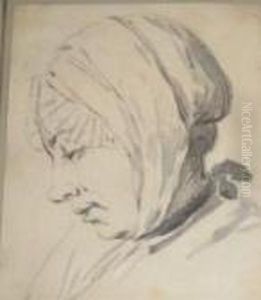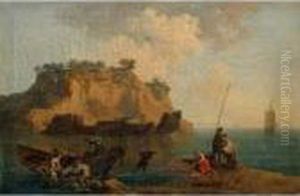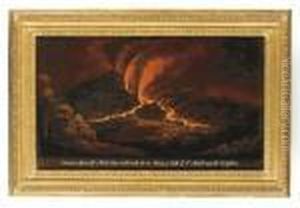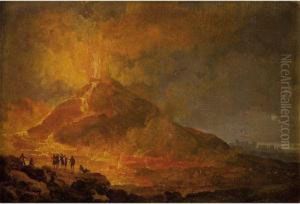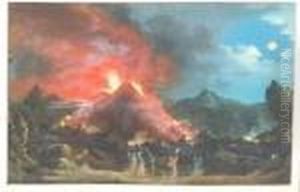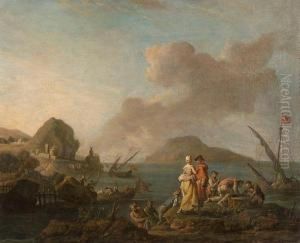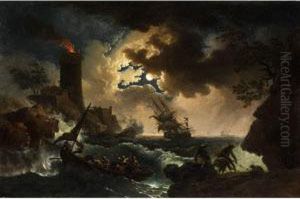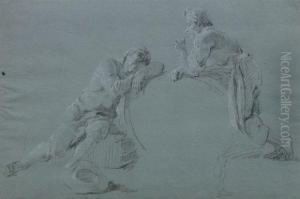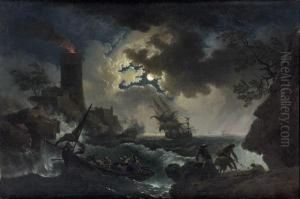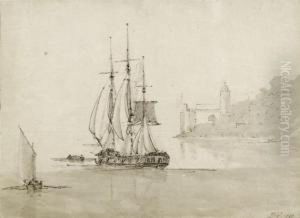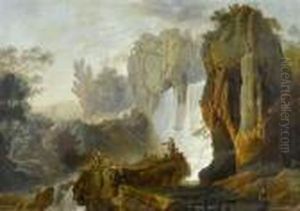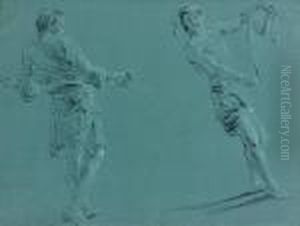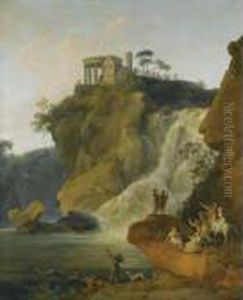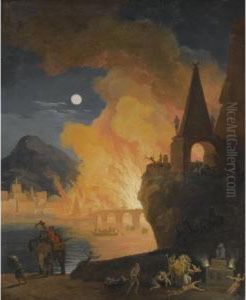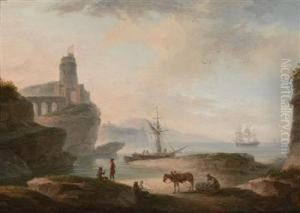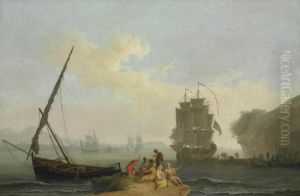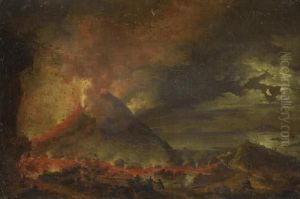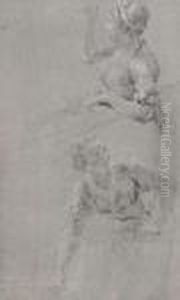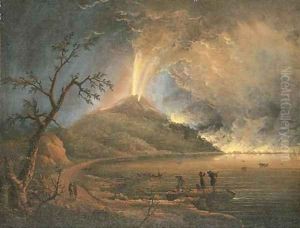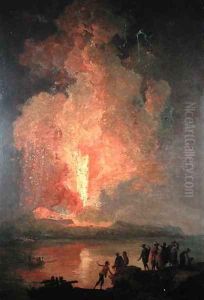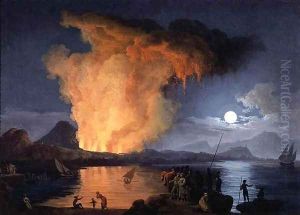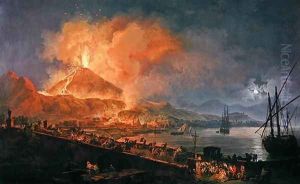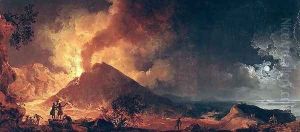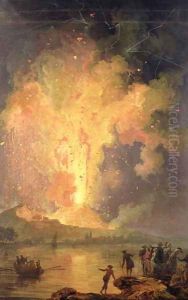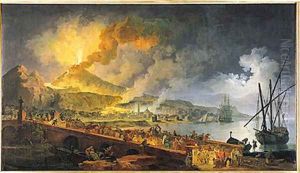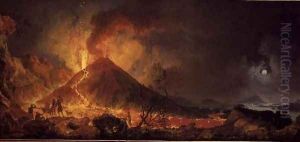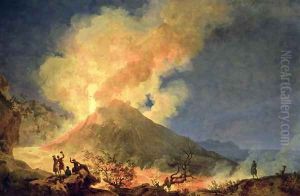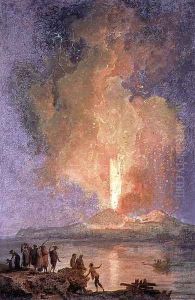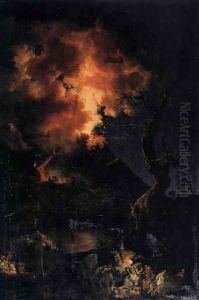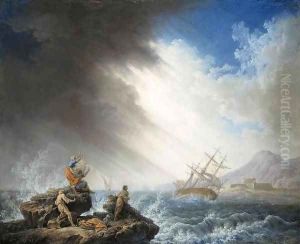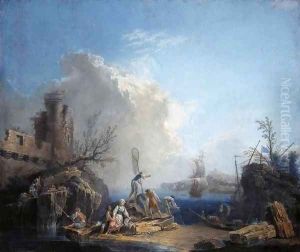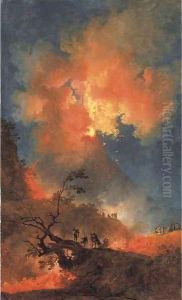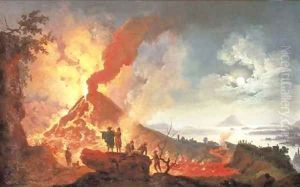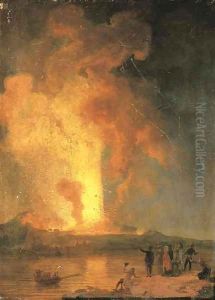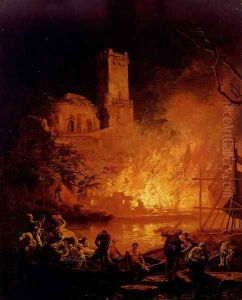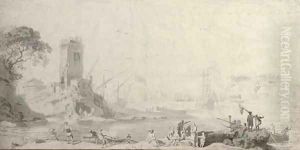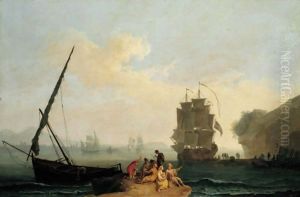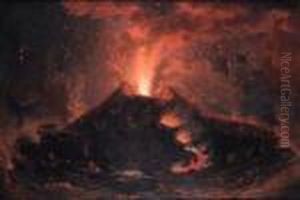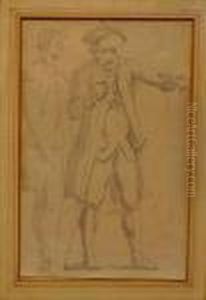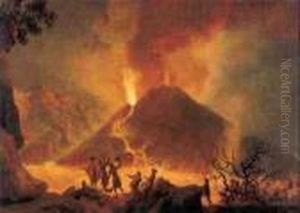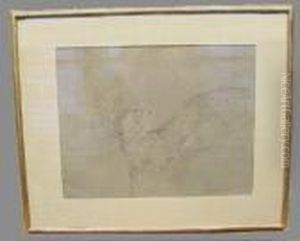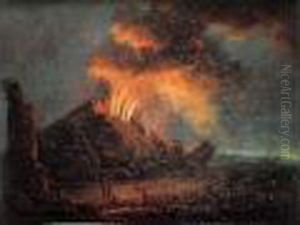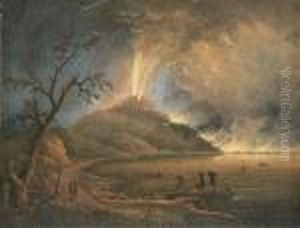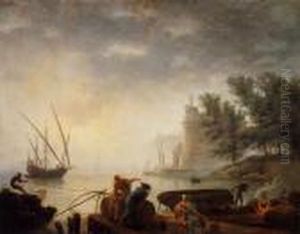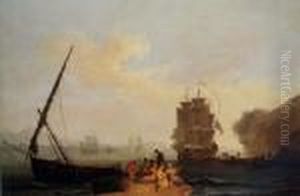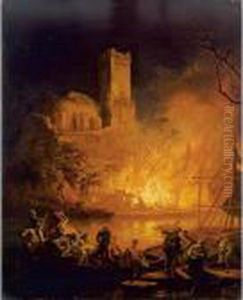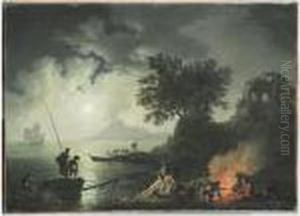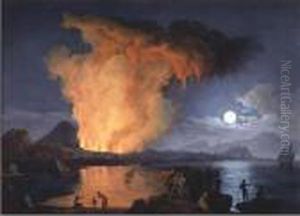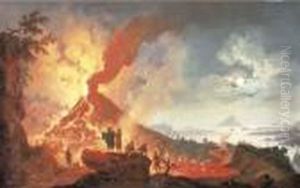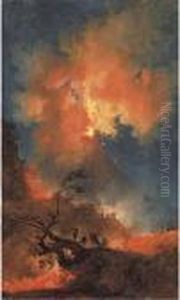Pierre-Jacques Volaire Paintings
Pierre-Jacques Volaire, also known as Pierre-Jacques Voltaire, was an 18th-century French painter born in Toulon in 1729. Volaire specialized in landscape paintings, particularly those depicting natural disasters, such as volcanic eruptions. He is most renowned for his dramatic portrayals of the eruptions of Mount Vesuvius, which became a significant theme in his body of work.
Volaire likely began his artistic training with his father, who was a painter in Toulon. He then moved to Paris to further his education and was influenced by the works of landscape painters like Claude Joseph Vernet. To enhance his skills and seek new inspirations, Volaire traveled to Italy, which was a common practice among artists of that period. It was in Italy, specifically in Naples, where he found his niche in painting volcanic landscapes.
The dramatic and sublime nature of Volaire's work captured the fascination of his contemporaries, and he became particularly successful in the 1760s and 1770s. His rendition of the Vesuvius eruptions appealed to the tastes of the time, fitting well with the aesthetic of the sublime, which emphasized the power and grandeur of nature. The eruptions of Vesuvius, with their fiery skies and molten lava, provided the perfect subject matter for this genre.
Throughout his career, Volaire produced a considerable number of paintings of Vesuvius. His works were not only sought after by collectors in Italy but also by international patrons, which helped him achieve significant fame during his lifetime. His paintings were known for their atmospheric effects and the precise depiction of the volcano's fiery glow, which he often contrasted with the cool tones of the surrounding landscape or the serene night sky, creating a dramatic visual effect.
Despite his success, details about Volaire's personal life and later years are relatively scarce. He spent most of his career in Italy, and it is believed that he died in Naples in 1799. His art continues to be appreciated for its historical value and its significant contribution to the landscape genre, capturing a unique aspect of 18th-century European art, where the forces of nature were brought to life with a sense of awe and a flair for the dramatic.
